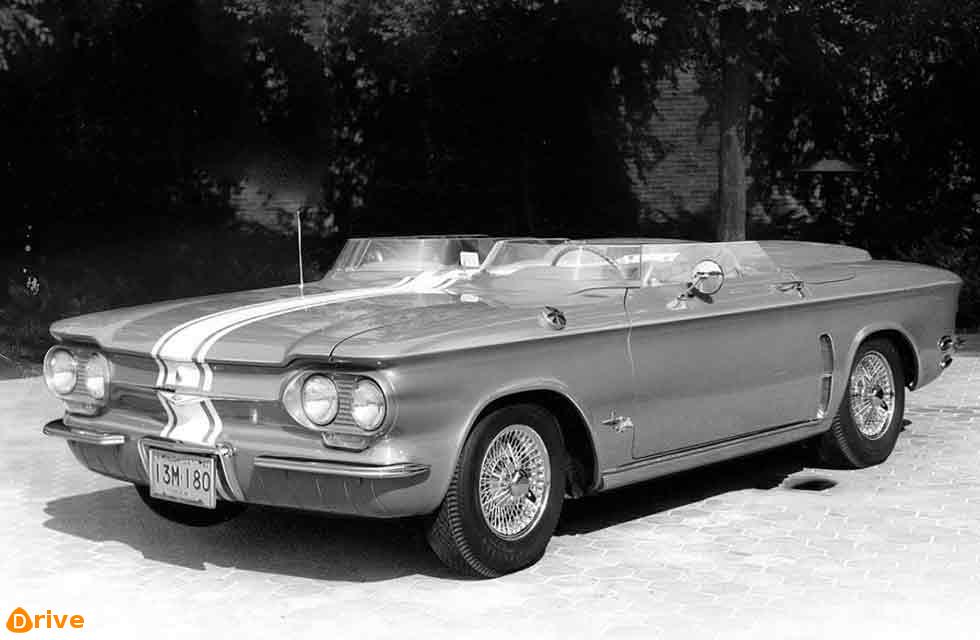There’s something of a Corvair theme in this month’s columns; here Richard Heseltine looks at a very special Corvair-based sports car that hinted at a performance special that sadly never made it into the showrooms…
Richard Heseltine From here to obscurity
CHEVROLET CORVAIR SEBRING SPYDER
General Motors’ styling czar Bill Mitchell dubbed it ‘a Corvair-Corvette for the smaller sports car market’. Not that there was ever any likelihood of the Sebring Spyder making it into production, more’s the pity. This long-forgotten concept queen was strictly a oneoff, but it was an intriguing one, nevertheless. Breaking cover at the February 1961 Chicago Auto Show, it instilled excitement in onlookers and the media alike, only to disappear into the ether almost as soon as it appeared.

According to Car & Driver magazine, the car was conceived with high-performance in mind. Writer Dic van der Feen stated: “Mitchell started with the standard Corvair chassis and reduced the wheelbase by 15 inches, nearly all of it taken from between the back of the stock door and the rear wheel arch. Those doors are the only normal Corvair panels on the Sebring Spyder.
“All the other body pressings are special steel fabrications. The exception is the rear deck. This quick-lift unit is (made of) glassfibre and covers not only the engine, but the upholstered baggage section behind the seats. The headrest fairings lift right with it. Overall length of the Spyder is 162 inches, against the normal model’s 180 inches, but overall width is up from 67 inches to 68.5 inches. The Spyder is strikingly low. It measures just 37 inches off the ground at the top of the headrest fairings.”
The scoops sited just in front of the rear wheel arches weren’t for show, either. They were in place to cool the brakes behind the glossy 13in Dayton wire wheels. The regular Corvair suspension was also upgraded. It received a front anti-roll bar, two degrees of negative camber at the rear and special coil-over shock absorbers at either end. Then there was the six-banger slung out back.
According to the Car & Driver report: “Bill Mitchell turned the engine over to Zora Arkus-Duntov, the Corvette’s godfather, who promptly installed the special cam… It is fully balanced with all the clearances to dead-on engineering specification, and is fitted with – surprise – an awesome Paxton supercharger.” The blower amounted to a 32bhp increase over the standard car’s 98bhp.
“Absolutely nothing was available on power or performance specifications, but we could – and did – sit behind the wheel where we blipped the tacho to the 5500rpm mark,” the article continued.
“The engine wound up freely so we wondered if the accelerator pedal was connected directly to the needle. The rear area of the tacho is from 5200 to 5800rpm, with the higher mark being the danger point… The twin pipes from each side of the familiar opposed ‘six’ run to the opposite side behind the engine but inside the rear body panel before reaching the rudimentary muffler. This gives the necessary length for optimum extraction effect with no abrupt curves in the pipes.”
Inside, the dished wood-rim wheel fronted a raft of instruments which stretched to a 140mph speedometer. Then there were the signature individual aero screens and go quicker stripes which represented pure race car-inspired whimsy.
Sadly, however, despite receiving plenty of positive ink in period, GM’s styling department wasn’t exactly sentimental about its show cars. It is widely held that the Sebring Spyder was quietly scrapped in 1966. Damn and indeed blast.





